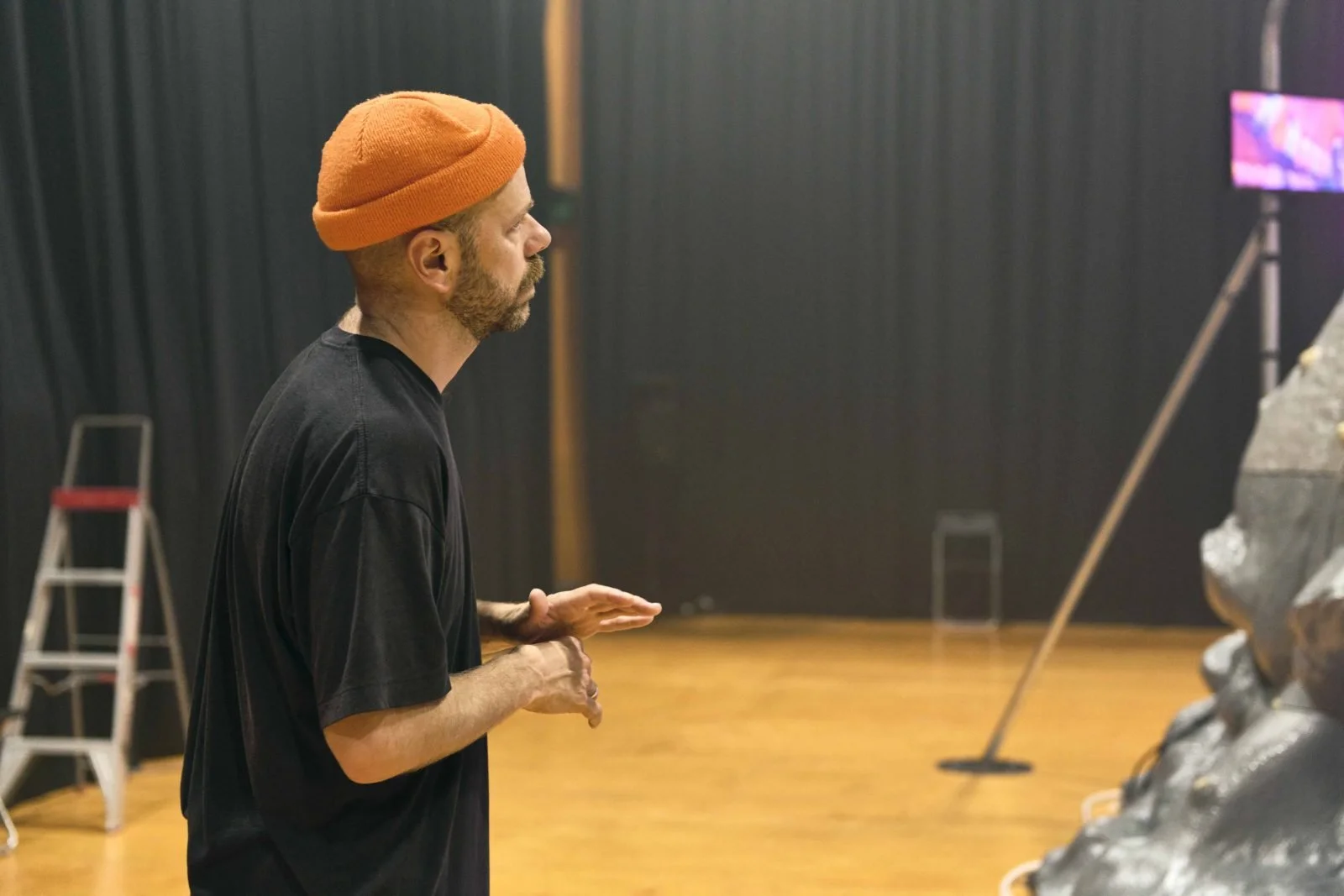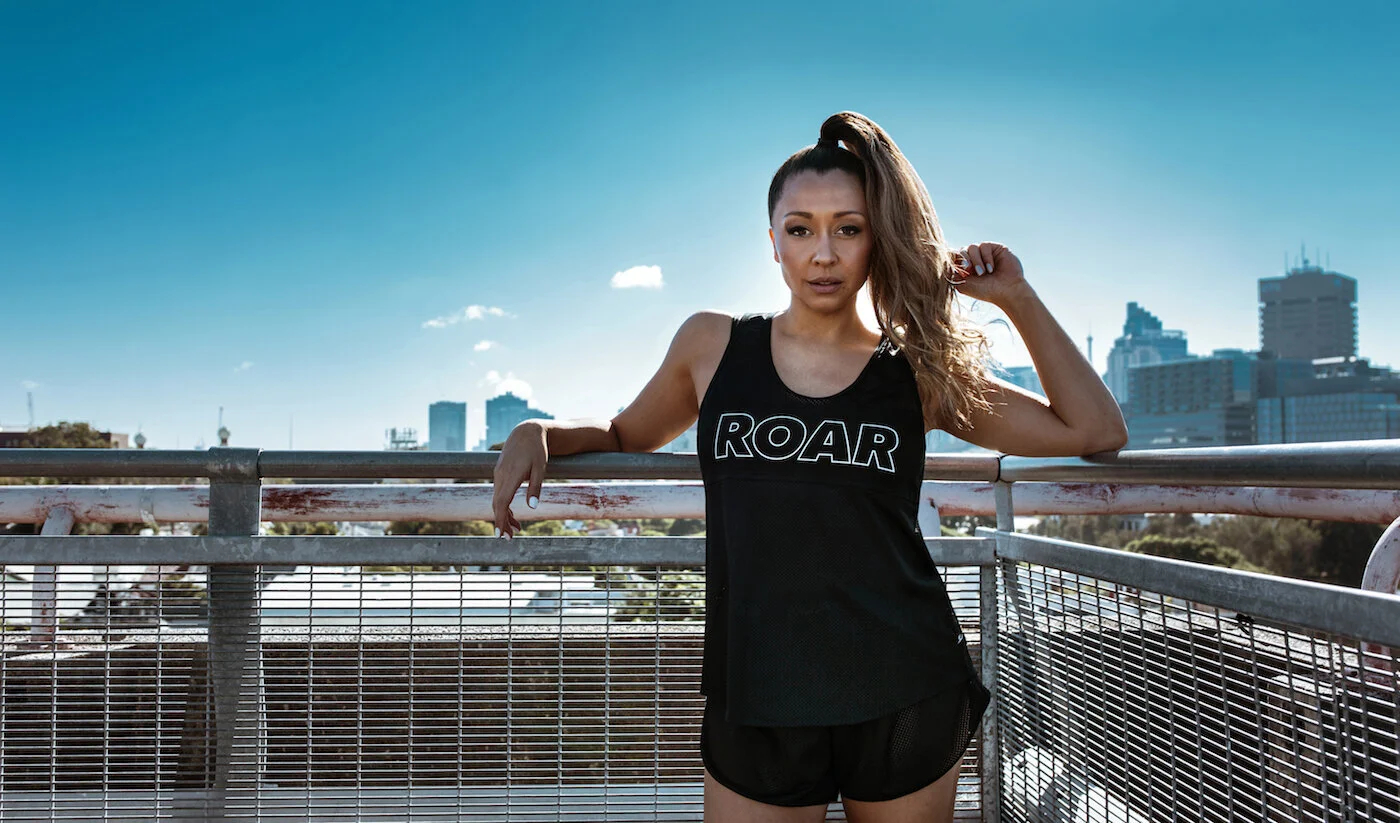Text by Ira Ferris
It is a strange time to write a praise to dance…
It is January 2020, the middle of Australian summer and we are experiencing the worst fire season to date. The air is covered with thick smoke, the land is burning, the sky is grey, the atmosphere dire; there seems to be little reason to dance, but as someone wisely told me: “you can’t pour from an empty cup.” 1 Sinking into depression and anxiety (which are both justified feelings) will do us no good; we need to give ourselves a chance to shake it all out and reset, which is what I realised coming back from the Woodford Folk Festival where I went with lungs full of smoke and heart full of heaviness, absolutely deflated after an intense shock of our suddenly apocalyptic world. I went feeling powerless, glued to the news and unable to imagine, yet alone participate in the creation of a different, kinder reality. But while at Woodford, I made it my mission to dance a lot, to stir it all up and pour it all out. I returned home lighter. The exuberance of dancing cleared the fog of panic and created “the comforting background against which [I was now able] to think [and tackle] the uncomfortable.”2
It is a strange time to write a praise to dance, but it also seems a necessary time. Because, apart from being a powerful expression of resilience - a way to cope with and stay on our feet – dance is also a way to reconnect with nature, resist capitalistic oppression, reclaim freedom, strengthen intuition, and learn to be in the uncertainty.
I was five years old when I “started” dancing and I realise now, upon reflection, that training in dance taught me to tune in with my body, to be attentive to its signals and aware of the ways it occupies and interacts with the space. As dancers, we take care of each other as we move, and we are cared for. But spatial awareness has become rare in our society that moves within the virtual world. As Kristýna Bartošová, a Czech documentary and dance filmmaker put it:
“We live in our heads and not in our bodies, and we don't use our senses at all; especially now, when we live in a digital world. We are losing the connection with the most precious thing, the relationship with our mother.”3
To feel the world through our skin, and not only through the eyes; to feel the connection to what surrounds us, is environmentally urgent. When we dance, our movements respond to the shape and the quality of the space. We feel held by the ground and touched by the wind. We feel the sound-beats running through our veins, and the temperature of the air brushing against our skin. To feel this tactile relationship to the world, this interconnection between the environment and our bodies, is to recognise how one affects the other. To become embodied again is to be able to care for ourselves, which is a prerequisite of caring for everything else - humans, animals, vegetation. Because if we don't care about our own bodies and if we don't have capacity to hear our own bodies, then we can't hear the greater body of the Mother Nature within which we live. Dancing bodies are environmentally conscious.
In Dancing in the Streets: A History of Collective Joy, Barbara Ehrenreich writes:
“Well before people had a written language, and possibly before they took up a settled lifestyle, they danced and understood dancing as an activity important enough to record on stone.” 4
Nowadays, dancing is something we do only at designated times and settings; and in particular, choreographed ways. Turned into an aesthetic form, dancing has become administrated and exclusive. Whereas in the past we all danced together, as a communal ritual through which we celebrated life, honoured the land, and evoke the spirits,5 today dance has become something some of us perform for others who watch.
If dance is a part of our nature, what becomes of us if we stop dancing? What kind of world do we create, or give allowance to? The world where our freedom of expression is inhibited. The world based on judgement and assessment. The world in which we are estranged from ourselves, thus, easy prays for products that are meant to fill in the gap; the products sold to us to briefly satisfy the deficiency felt by the spirit that is deprived from the thrill of dance.
To return back to the free-style, instinctual, improvised dance in which everyone can partake and through which everyone can express themselves, is therefore a revolutionary act of resistance to the socio-political control and manipulation of the body. Dancing bodies carry revolutionary force.
When we dance in an improvised manner we let go of certainty, thus, opening ourselves to what might emerge. Dance shines light onto the rigid border of thought that is removed from feeling, from experiencing. As we dance, we move the edge of what and how it is, to what and how it might be. Movement initiated from within is inspired by infinity of imagination and freed from stability of form. In this intellectual humbleness, we let wisdom of our bodies guide us. We respond to the present, to the now. We create space for that which taught cannot yet think and, by accident, we discover what we did not yet know we are capable of. From the world of logic and possessions, we glide into the world of feeling and connection. We open ourselves to listening, rejoicing in the constant flux of learning, released from the fixity of knowing. We become mobile once again. Dancing bodies are intuitive bodies.
Dance that is free from any prescribed form unearths us while also connecting us to the earth, and in this voluminous void there is nothing to hold on to, nothing previously known. We are left to the courage of entrusting ourselves. To dance like that requires letting go of training, of conditioning, of memory. There is no prescribed rhythm that a dancer needs to follow beside the idiosyncratic rhythm of one’s own body, which is an instrument in itself. This dance creates room for those who thought that they cannot dance. In this dance, if anything, those who know less discover more. Dancing bodies are inventive bodies.
Dance matters because to dance is to simply reclaim what was always ours, in us. This (re)discovery creates a new world (which is actually an old world) where there is equality and not exclusion, curiosity and not judgement, playfulness and not definition, expression and not oppression, joy and not bleakness. This is a world of movement and not rigidity, of action and not fear, of responsibility for and not authority over.
Perhaps now that the world seems to be falling apart, the last things we feel like is dancing. But what if we did dance right now?
Words by Amiee Hershan, interview with whom you can read or listen to here: https://www.artemisprojects.com.au/dance-matters-amiee-hershan
Words of Kathleen Marie Higgins, from her 1996 essay Whatever Happened to Beauty? A response to Danto
Extract from the podcast with Kristýna Bartošová, full length of which is here: https://www.artemisprojects.com.au/dance-matters-kristyna-bartosova
This quote from Barbara Ehrenreich was discovered in ‘Dancing in the Streets: Political Action and Resistance in Melbourne,’ an essay written by Susan Bird for the Journal of Musicological Research. Also in ‘Force and Form: Nietzsche and the Concept of Dance,’ Monique Lyle writes that for Nietzsche “motion is the most familiar thing to us. This means that we grasp what motion is before we use language. And dance comes before language for Nietzsche in order to serve this purpose.”
See for instance the healing ceremony recently performed by Yuin Indigenous Australians at Mount Gulaga https://mobile.abc.net.au/news/2019-12-09/indigenous-australians-unite-in-historic-healing-ceremony/11781738
To find out more about the significance of dance in ancient or indigenous cultures, read or listen to the interview with Yorgo Kaporis: https://www.artemisprojects.com.au/dance-matters-yorgo-kaporis
Acknowledgement: Dance is also about community, about sharing and exchange, and in writing this piece I have “danced” with many other minds, whose thoughts on Why Dance Matters Now? you can read or listen to here: https://www.artemisprojects.com.au/why-dance-matters-now
All images are by artist Lena Kramaric: http://lenakramaric.com/
Ira Ferris is a former contemporary dancer, now art curator, writer, podcaster, and yoga teacher. She is a co-Artistic Director of Artemis Projects, creating between Australia and Europe. In her curatorial practice, she is interested and inspired by somaesthetics and the way our bodies navigate and experience the exhibition space.
Website: https://www.artemisprojects.com.au/
Instagram: https://www.instagram.com/artemisprojects/
Facebook: https://www.facebook.com/artemis.projects/
Delving into Dance in partnership with Critical Path, invited those engaged in dance (in whatever capacity) to share thoughts as to why dance matters now…
Together we have commissioned five texts for publication from Australian artists and writers for the digital Interchange Festival 2019. The artists that present their work are Adrianne Semmens & Jennifer Eadie, Alison Plevey, Ira Ferris, Simon Ellis & Shaun McLeod and Tsuki Becoming.














